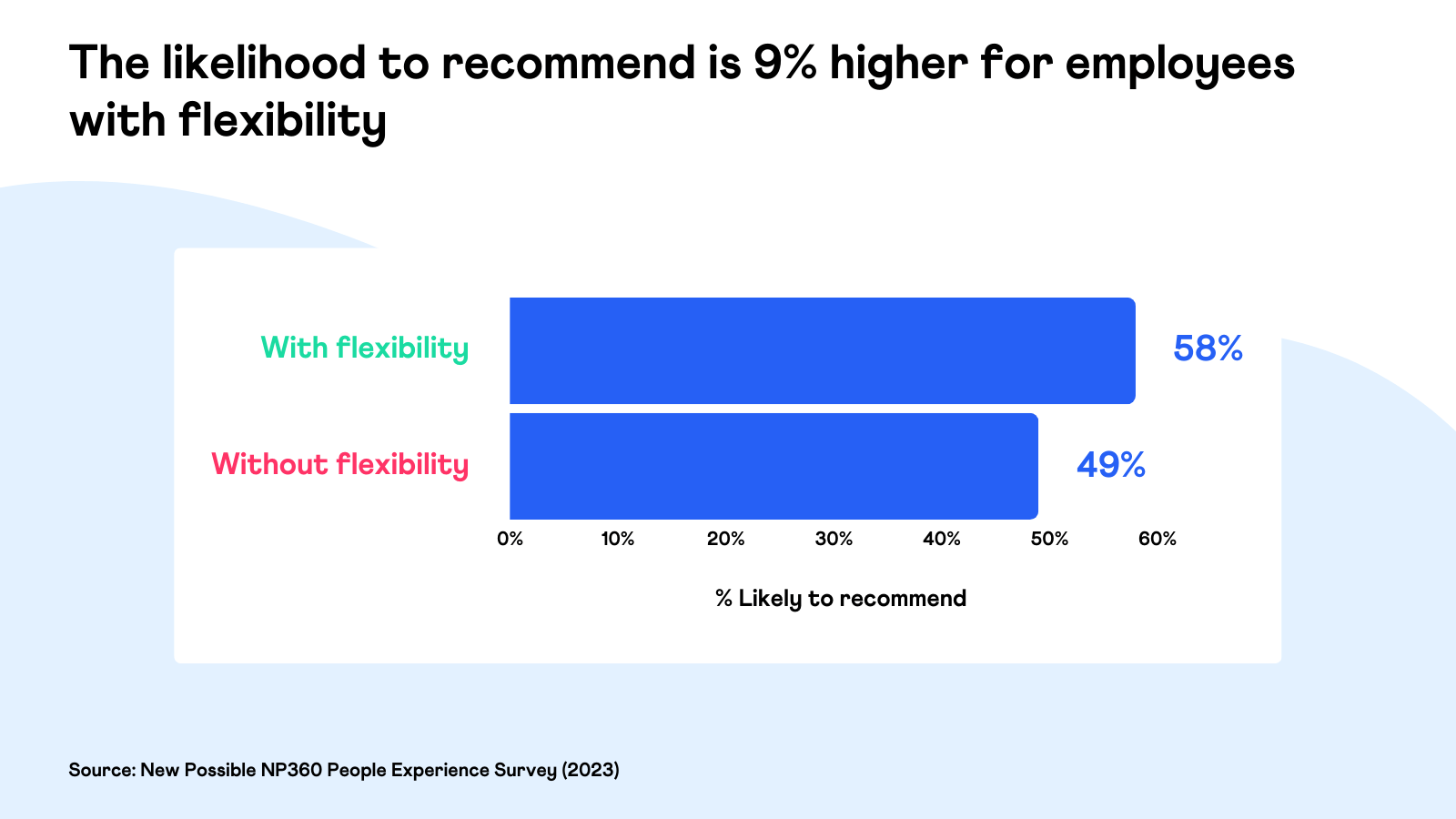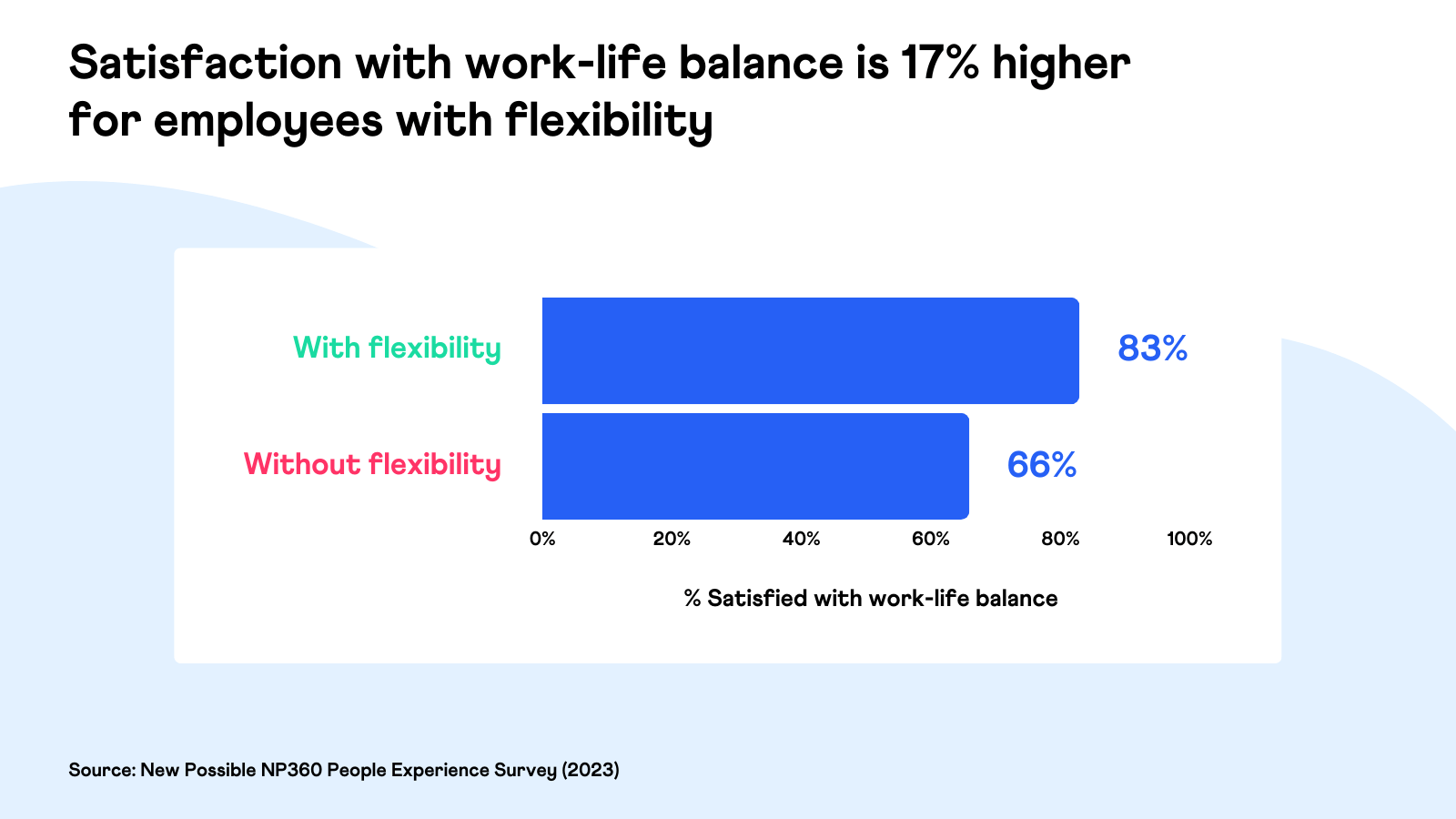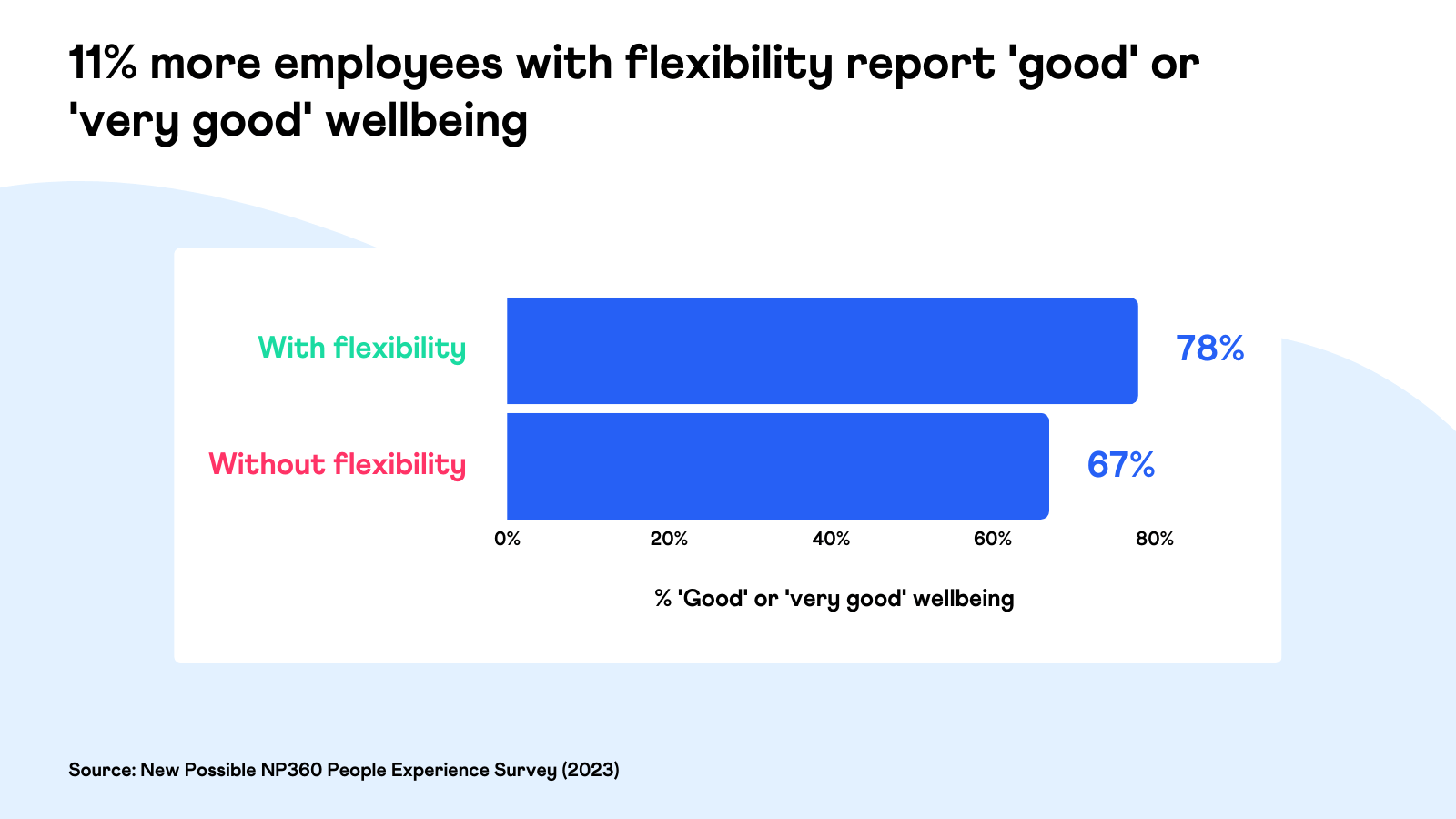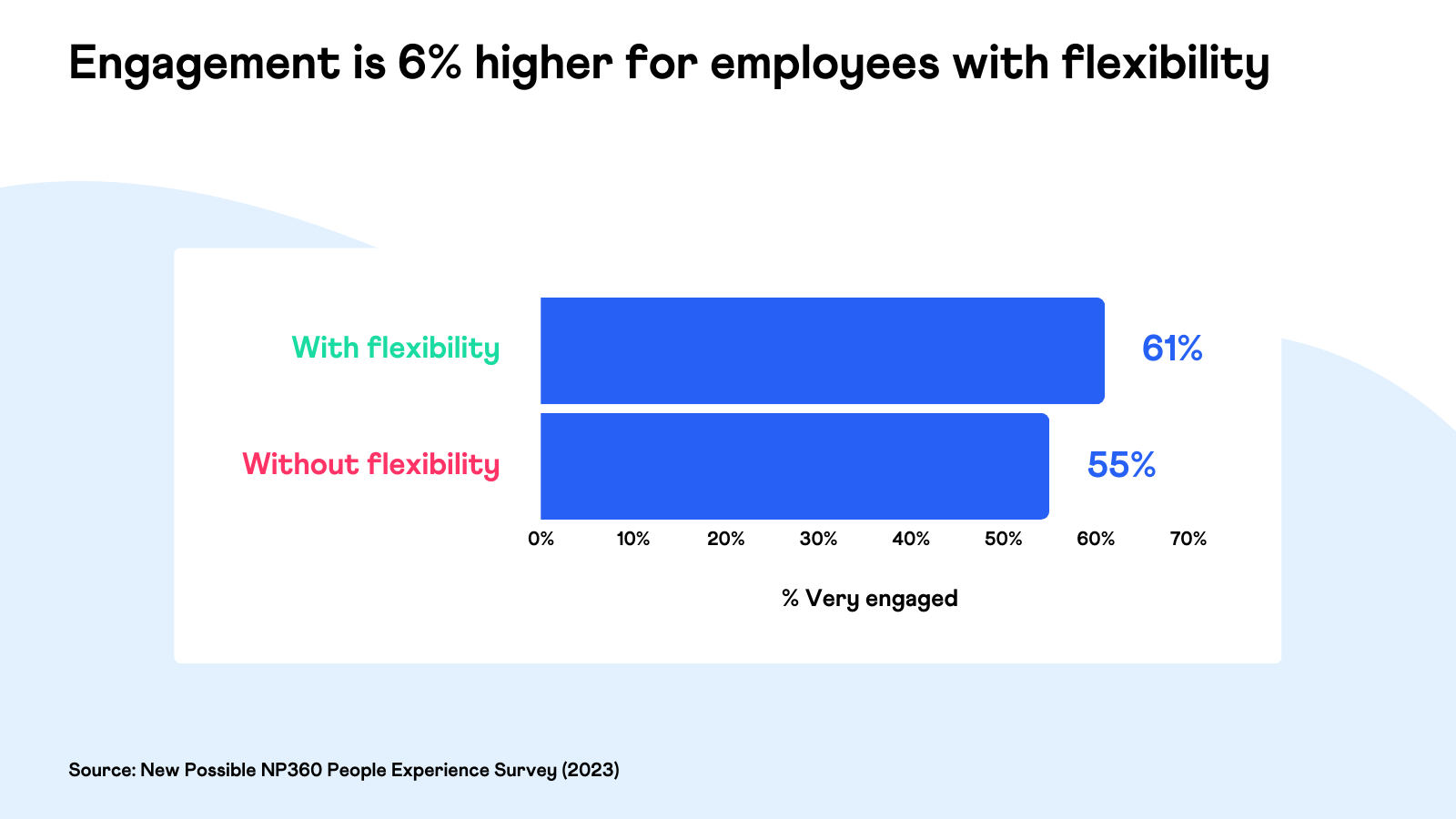By Ava Kaveh, Graduate Data & Insight Analyst at New Possible
Our latest 'What Workers Want' survey found that 50% of employees without flexibility are considering a job change within the next year, compared to 28% of employees who have flexible working options. This suggests firms offering flexibility increasingly stand out in both the eyes of existing and potential employees.
In this article, we explore why employees with flexibility (in when and where they work) are less likely to leave. We’ll delve into recent data from our NP360 people experience survey, which measures people across 7 themes, and compare the perspectives of employees who are happy with their organisation’s approach to those who see potential for improvement. Specifically, we’ll look at the impact of flexibility on satisfaction, work-life balance, wellbeing, and engagement.
We’ll first examine the relationship between flexibility and the employee Net Promoter Score (eNPS), which serves as an indicator of loyalty and satisfaction. It's calculated by asking the following question: 'On a scale of 0-10, how likely are you to recommend Company X as a place to work?'.
Based on their score, employees are categorised as:
- 9-10 - Promoters: Happy and motivated enough to actively recommend
- 7-8 - Passive: Mostly happy, but not enthusiastic enough to recommend
- 0-6 - Detractors: Dissatisfied and unlikely to recommend

Our findings uncover a positive relationship between workplace flexibility and satisfaction (eNPS). Employees who are happy with their level of flexibility have a higher tendency to be 'promoters,' with 58% falling into this category, compared to 49% of employees who are seeking more flexibility.

When it comes to work-life balance, 83% of employees who are happy with their organisation’s flexibility say they’re satisfied with work-life balance - 17% higher than employees without such flexibility (66%). In addition to greater flexibility, employees frequently suggest reducing workload and working hours as ways to enhance work-life balance, with growing demand for a 4-day work week.
“Having the flexibility to spend 40% of my work week remotely and the remaining 60% on-site, equivalent to two days at home and three days in the office, would enable me to achieve a better work-life balance, allowing me to make the most of my mornings and evenings.”

Our data also shows a clear link between flexible work arrangements and employee wellbeing. Among those satisfied with their organisation’s approach to flexibility, 78% report their general wellbeing as 'good' or 'very good’, compared to just 67% of employees lacking such flexibility. This difference highlights the positive impact that flexibility has on overall employee health and happiness.
“I previously had flexible working options; it has just ended and I miss that shift pattern (it’s only been a week). It really benefitted me, my mental health and my family which was the intended purpose.”

Within NP360, we also examine engagement levels. We apply the UWES-3 question set to measure how energised, enthusiastic, and absorbed employees are by their work:
- “At work, I feel bursting with energy.”
- “I am enthusiastic about my job.”
- “I am immersed in my job.”
Our findings indicate that employees satisfied with their organisation’s flexibility report higher engagement. On average, 61% of these employees are ‘Very often’ or ‘Always’ engaged, compared to 55% of those who say flexibility could be improved. This suggests that flexibility in the workplace not only boosts satisfaction, work-life balance and wellbeing, but also enhances employee engagement, which is also linked to higher productivity.
The business case for flexibility
“I found I was far more productive on a flexible shift pattern”.
According to 2023 research by CIPD, 38% of organisations say that hybrid working has increased their organisation’s productivity, compared to 13% who say it has decreased. In addition, ONS data from 2022 reports that half of those who worked remotely in some capacity reported it was quicker to complete work (52%) and that they had fewer distractions (53%).
In summary, despite the growing demand for employees to return to the office, our data, along with wider evidence, increasingly suggests that allowing individuals greater freedom to choose when and where they work enables them to perform at their best. Indeed, we believe that more flexibility can often be a win-win situation for both employees and their organisations.
Key takeaways:
- The likelihood to recommend is 9% higher for employees with flexibility
- Satisfaction with work-life balance is 17% higher for employees with flexibility
- 11% more employees with flexibility report 'good' or 'very good' wellbeing
- Engagement is 6% higher for employees with flexibility
About New Possible
New Possible is the people insight platform that’s committed to your success. We work with a range of sectors to provide clear, actionable, and benchmarkable insights across the employee lifecycle. Our NP360 survey helps leaders gain meaningful insight into the broader people experience, measuring 7 themes, including satisfaction, culture, and wellbeing. Read about our mission or book a demo to learn more.
If you’d like to discuss this research further, please email hello@newpossible.io or call 0161 706 0618.

